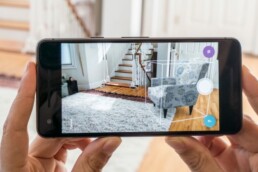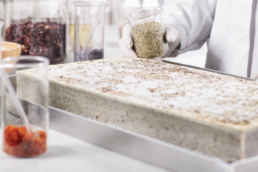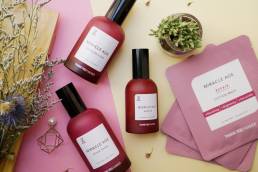Due to the rise in demand for K-Beauty products in the United States and Asia, South Korea became the 5th largest exporter of cosmetic products at $8.5 billion in 2021. The need for Kbeauty products worldwide has a lot to do with the rise of Korean culture worldwide. The boom of South Korean entertainment such as Kpop (BTS), Kdrama (Squid Game), Korean movies (Parasite), and Korean goods has been significantly attributed to the rise of the Korean cosmetic industry on a global scale.
China continues to be South Korea’s top market for the export of cosmetic products. In 2022, the exports of cosmetic products to China reached an all-time high of $4.8 billion. China accounts for over half of the total yearly cosmetics exports from South Korea. However, South Korea has seen its exports grow in other countries such as the United States, Japan, France, and England. Let’s deep dive into the Korean cosmetic industry to better understand what the future holds for the industry.
The Top 3 Health and Beauty Stores in Korea
We can’t start to talk about the Korean cosmetic industry without mentioning the top 3 health and beauty stores in Korea. These companies hold most of the power in the cosmetic market in Korea. Combined, they have over 1,500 stores all across South Korea. Olive Young focuses on selling the more established beauty brands, while Lalavla and LOHR are known to showcase new brands and products. Therefore, new and just-starting k-beauty brands need to target the latter.
Olive Young
 CJ Group’s Olive Young is the #1 health and beauty store in South Korea, and the others do not even come close. They first opened in Gangnam in late 1999 and focused mainly on natural and healthy beauty products. They sell everything from cosmetic accessories, beauty supplies, skincare, and even food/beverages. Olive Young has everything you need when looking for health or beauty products in Korea. Moreover, they don’t just sell Korean beauty products. They also sell imported cosmetics from around the world. In addition, you can get cash-back discounts if you have a CJ membership card. Currently, there are over 1,200 Olive Young stores in South Korea.
CJ Group’s Olive Young is the #1 health and beauty store in South Korea, and the others do not even come close. They first opened in Gangnam in late 1999 and focused mainly on natural and healthy beauty products. They sell everything from cosmetic accessories, beauty supplies, skincare, and even food/beverages. Olive Young has everything you need when looking for health or beauty products in Korea. Moreover, they don’t just sell Korean beauty products. They also sell imported cosmetics from around the world. In addition, you can get cash-back discounts if you have a CJ membership card. Currently, there are over 1,200 Olive Young stores in South Korea.
Lalavla
 Lalavla is the result of a rebrand of Watsons in Korea. GS Retail did a complete rebrand back in 2017 to target millennials. They switched to beauty products that focused on natural, organic, and eco-friendly items to appeal to socially conscious shoppers. Therefore, all the products sold at their stores are made of recyclable packaging. In addition, if you have a GS25 membership, consumers get additional monthly discounts ranging between 10-15%. They account for over 200 stores in South Korea.
Lalavla is the result of a rebrand of Watsons in Korea. GS Retail did a complete rebrand back in 2017 to target millennials. They switched to beauty products that focused on natural, organic, and eco-friendly items to appeal to socially conscious shoppers. Therefore, all the products sold at their stores are made of recyclable packaging. In addition, if you have a GS25 membership, consumers get additional monthly discounts ranging between 10-15%. They account for over 200 stores in South Korea.
LOHB
 Lotte is the parent company of the personal and beauty care store brand LOHB. They have begun to merge LOHB stores with their supermarket chain Lotte Mart. The first LOHB store was launched in Seoul (Hongdae) in 2013. Currently, they have around 100 stores in South Korea, with most located inside Lotte Mart locations.
Lotte is the parent company of the personal and beauty care store brand LOHB. They have begun to merge LOHB stores with their supermarket chain Lotte Mart. The first LOHB store was launched in Seoul (Hongdae) in 2013. Currently, they have around 100 stores in South Korea, with most located inside Lotte Mart locations.
The Top 2 Cosmetic Producers in Korea
AMOREPACIFIC

AMOREPACIFIC is the top beauty and cosmetic producer/conglomerate in Korea. They operate over 30 beauty, health, and personal care brands. Some of these brands include Sulwhasoo, Etude House, and Innisfree. They are the world’s 12th-largest cosmetic company.
LG Household & Health Care

LG launched the very first cosmetic product and first toothpaste. Currently, LG Household & Health Care is one of the top producers of cosmetics and personal care products in Korea. Their brands include SU:M37, The History of Whoo, and The Face Shop. In 2014, they acquired a Korean cosmeceutical company, CNP Cosmetics, to keep up with the latest cosmetic trends. They are currently the second-largest cosmetics company in South Korea.
Koreans’ Love for Foreign Cosmetic Brands

Global brands have been known to acquire Korean beauty companies. Estee Lauder bought Dr. Jart+ in late 2019 for $1.1 billion. Goldman Sachs bought a minority stake in GP Club Co., makers of Kbeauty facemasks. Unilever, NIVEA, and L’Oreal also have stakes in Korean cosmetic companies. Global brands understand the power of K-Beauty.
Global Brands in Korea
For global brands looking to break into the South Korean market, the good news is that there is a demand for foreign cosmetic products in Korea. Imports of global cosmetics into Korea stand at $1.5 billion.
- France comes in #1 at 30% with $453 million worth of imports.
- The United States comes in 2nd at 23% with $345 million.
- Japan comes in 3rd at 17% with $257 million.
Of these cosmetic imports, close to half of the imports are for skincare cosmetics. Haircare products come in 2nd at 15%, 14% for makeup cosmetics, and 11% for perfumes. Foreign cosmetic brands such as Dior, Yves Saint Laurent, Chanel, Estee Lauder, and L’Oreal have found great success in South Korea. This is unlikely to change moving forward.
This is because Koreans are starting to buy foreign brands at the same prices as it is sold abroad. More and more global brands are offering overseas shipping and expanding their marketing to target a wider audience. US brands will likely see a great opportunity in 2023 to enter the South Korean market. The United States and South Korea have a trade agreement called the US-Korea Free Trade Agreement, which was formed in 2012. The agreement eliminated all Korean tariffs on imported US cosmetics in 2021. This also means more Korean brands will be imported into the United States. Therefore expect to see Korean brands show up more often in cosmetic stores across the United States in the coming years.
The Korean Beauty Culture

The way you look is significant not just for women in Korea but also for men. Korean culture puts a lot of value on appearance and beauty. So much so that most jobs in Korea require you to add a picture of yourself to your resume. Therefore, Kbeauty products, Korean fashion, and plastic surgery in Korea are always on the rise. These industries in Korea are some of the most competitive industries in Korea. Brands are constantly investing money into R&D to develop new and innovative products to stay ahead of the competition. This is why there are so many beauty startups in Korea. Bigger brands constantly scout beauty startups to find the next big product or service they can incorporate into their company.
Korean women are not the only ones buying cosmetics in Korea. Korean men are also helping to drive the cosmetics market. Out of all the men in the world, Korean men spend the most on cosmetics. Some of the more popular products used by men include moisturizers and toners. Korean men also buy makeup. The top makeups bought by Korean men are eyebrow liners, lip balms, and foundations. In addition to this, Korean men also get beauty treatments regularly. Korean celebrities help with the sale of Korean beauty products in Korea. They also want to emulate the same look of their favorite K-pop idols and Korean actors.
The Average Korean Beauty Consumer

The first thing to understand about the average Korean beauty consumer is that they are very tech-savvy. South Koreans generally are very receptive to the latest tech trends. South Korea has the highest smartphone ownership, broadband penetration rate, and fastest average internet speed. Therefore more and more Koreans are shopping not just on websites but on their mobile phones. Furthermore, COVID-19 has accelerated the shift to the online and mobile cosmetics industry. Brands in Korea understand the importance of having a solid digital presence to target future customers.
The Korean National Statistical Office has stated that cosmetics online shopping transactions were above $15 billion in 2022. Of these, mobile cosmetics transactions accounted for $9.2 billion. This is why brands in Korea focus heavily on marketing on social media channels like Instagram, Facebook, Twitter, TikTok, Kakao, YouTube, etc. Social Media is the key marketing tool for many Korean cosmetic companies. The average Korean beauty consumer is very knowledgeable about cosmetic products. Not only do the products have to be great, but they have to be reasonably priced. In addition, they need to offer something different to US brands. They can’t copy but need to be the ones setting the beauty trends.
Hottest Trends for the Korean cosmetic industry for 2023
Cosmeceuticals
Cosmeceuticals are cosmetics that have or claim to have medicinal properties. In previous years, keywords such as anti-aging, antioxidant, skin brightening, sun protection, and anti-pollution were the hottest targets for the cosmeceutical industry. Korean brands have tested many ingredients, from traditional Korean herbs to all forms of extracts (even snails). However, the Korean government regulations for both functional cosmetics and cosmeceuticals. This industry alone is a $1 billion industry in Korea.
Sustainability
In December 2019, South Korea implemented the Recycling Act, which impacts all products sold in South Korea. This means that cosmetic brands had to focus on sustainability for all their products. The use of plastic materials that are difficult to recycle, such as PVC and colored PET bottles, is now banned in Korea. Therefore, consumers in Korea are seeking more natural and environmentally friendly ingredients in their beauty products more than ever. However, this does not just apply to ingredients but packaging as well. Furthermore, cosmetics brands in Korea that focus on sustainability message to consumers that the brand is committed to gaining their trust regarding safety and social awareness.
Organic Ingredients
If cosmetic brands do not use natural/organic products, they will be left behind. These days, animal testing is a brand killer. YouTube videos showcasing the abuse of animals for beauty testing have made brands move towards a more ethical way of doing R&D. Many Korean beauty brands today focus on plant extracts (rose, lavender, mint, etc.) and oils that naturally help protect, nourish, and hydrate the skin. The latest trend in South Korea has beauty brands partnering with local farming communities for ethical sourcing collaborations.
Personalization using AI Technology
Consumers in Korea want solutions that target their specific needs. While they are open to trying new products, there is a growing demand to be able to customize beauty products in all categories. Therefore, K-beauty consumers in Korea want to be involved in the products they buy. For example, the Korean cosmetic industry now offers tailor-made skincare products by analyzing their customers using an app. The app by AMOREPACIFIC can measure the consumer’s facial dimensions, generate a skin diagnosis, and send the information to a special 3D printer that can print a hydrogel facial mask that is tailor-made for the consumer. The printing takes less than 5 minutes. With AI technology, personalization can be further optimized.
AR Makeup Experience
Augmented reality is the future of online makeup tutorials. Many offline beauty stores in Korea now offer an in-store AR mirror or app as “Virtual Assistants” to help consumers tap and try makeup products virtually. There are also virtual tutorials that will not only help you apply makeup but also offer recommendations by scanning the user’s face.
Regulations for the Korean Cosmetic Industry
The Ministry of Food and Drug Safety is responsible for regulating the cosmetic industry in Korea. Cosmetics are divided into two sections: functional cosmetics and regular cosmetics. functional cosmetics help with whitening, anti-wrinkle, sunscreen, tanning, hair colorants, hair nutrients, and skin damage. The Ministry of Food and Drug Safely reviews functional cosmetics for pre-market approval. Regular cosmetics are evaluated by the Korea Pharmaceutical Traders Association (KPTA).
How Cosmetic Brands Sell Their Products to Korean Consumers

The top strategy cosmetic brands in Korea use to sell their products is with Korean celebrities. Celebrity endorsements in Korea are one of the best ways to sell products in Korea. Even more so than using social media influencers. Koreans want to use popular products with K-pop idols or Korean Actresses. Brands pay these Korean celebrities a lot to promote their products through advertisements and social media.
KBeauty has already set itself up nicely through its 10-Step K-Beauty routine made famous by Soko Glam. This means ten products are needed to complete a K-beauty routine! Talk about a great marketing strategy! You add this to the use of social media and see why Kbeauty products have been so popular. Brands in Korea understand this. This is why many products focus heavily on easily shareable packaging on social media channels like Instagram, TikTok, and Facebook. Therefore most products have a sleek, fun, and colorful design that social media influencers want to share with their followers.
The typical timeline from the planning to the launch of a Kbeauty product takes 3-6 months. However, many brands are looking to lower this timeline to under three months to capitalize on the latest trends. They rely on marketers and influencers to keep track of the latest cosmetic trends to incorporate into their products. Once a hot trend is identified, the clock starts ticking to get the effect on the shelf as quickly as possible.
The Future of the Korean Cosmetic Industry
Korean Beauty brands will need to focus on technology to streamline their business. The world is becoming increasingly digital, and the competition within Korea is getting harder and harder. Going global is a must for many brands in Korea, which is why they need to invest not only in Korean media channels/platforms/K-beauty communities but also in global channels such as Google/Facebook. It is now more important than ever to produce content in English for the global masses, and the demand for K-beauty products will only continue to increase.
Related Posts
Top 7 Independent Korean Beauty Brands to Watch
January 15, 2023
Korean Proptech startups Focusing on the Construction Industry
February 13, 2024






